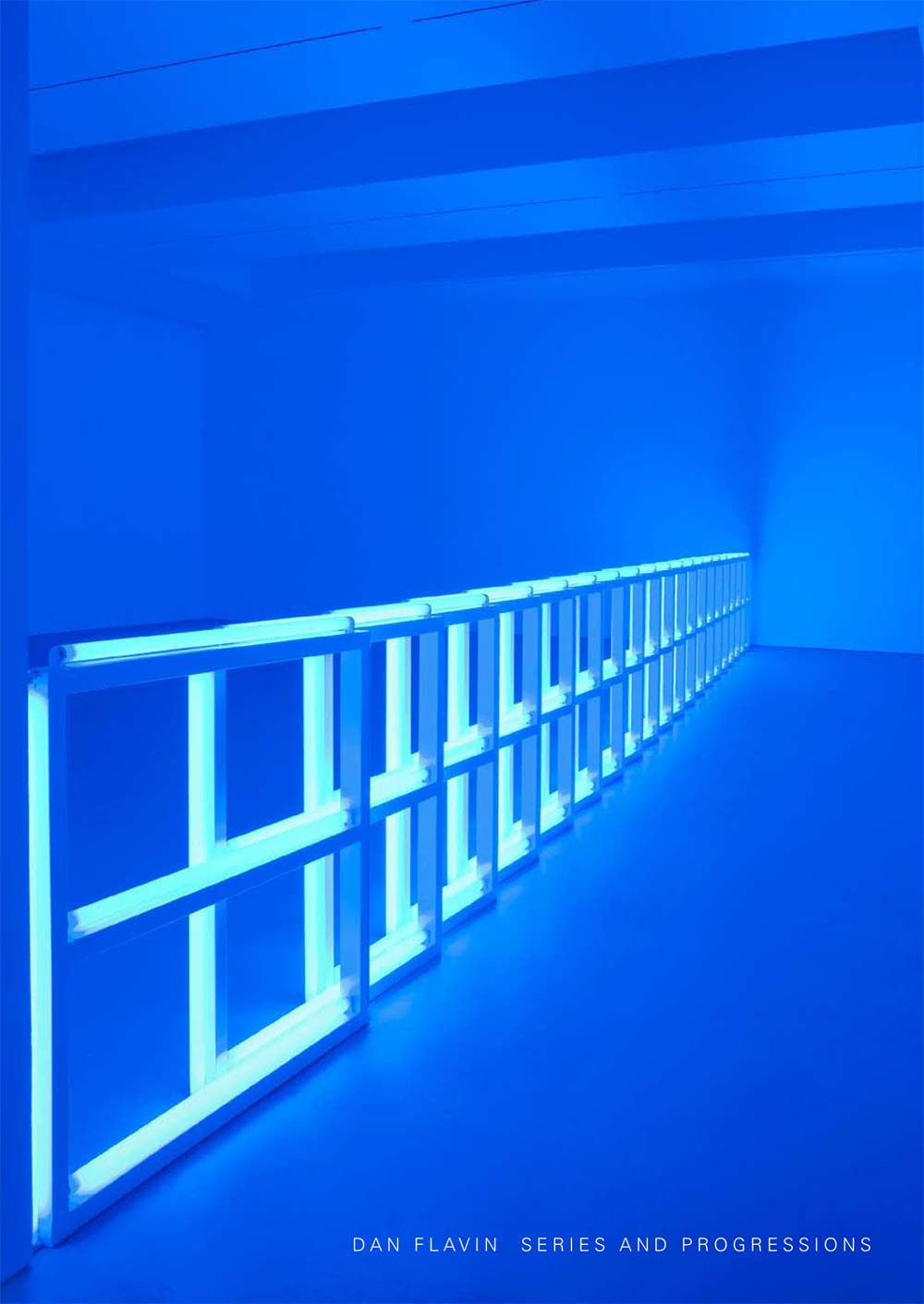Dan Flavin: The 1964 Green Gallery Exhibition
Text by Jeffrey Weiss
This publication documents a 2008 exhibition held at Zwirner & Wirth in which the gallery restaged the seminal exhibition of Dan Flavin’s fluorescent light sculptures that took place in 1964 at Richard Bellamy’s influential Green Gallery on West 57th Street, New York (dan flavin: fluorescent light, November 18 – December 12, 1964).
The Green Gallery exhibition was groundbreaking not only in terms of its presentation of radically innovative work that used commercially-available, colored fluorescent light, but also because it marked a turning-point in Flavin’s career. While the artist had previously exhibited a series of hand-made, painted wood constructions with lighting elements affixed to them (known as the “icons”), he began creating works made with fluorescent light alone in 1963. The Green Gallery show was the first exhibition composed entirely of fluorescent lights, and thus marked the development of the minimalist language of illumination that would characterize Flavin’s work until his death in 1996.
This catalogue includes 13 plates and features an essay by scholar and curator Jeffrey Weiss; statements by Sonja Flavin, Dan Graham, Dorothea Rockburne, Barbara Rose, James Rosenquist, and Brydon Smith; excerpts from Flavin’s journals; and archival photographs and reviews of the original Green Gallery exhibition.
Publisher: Steidl/Zwirner & Wirth
Artists: Dan Flavin
Contributors: Jeffrey Weiss
Publication Date: 2008
Binding: Hardcover
Dimensions: 9 x 10 1/4 in (22.9 x 26 cm)
Pages: 72
Reproductions: 24 color, 18 b&w
ISBN: 9783865216793
Retail: $45 US & Canada | £28 | €38
Status: Not Available
Dan Flavin
From 1963, when he conceived the diagonal of May 25, 1963 (to Constantin Brancusi), a single gold, fluorescent lamp that is installed on a diagonal on the wall—a work which marks the artist’s first use of fluorescent light alone, until his death in 1996, Dan Flavin (1933-1996) produced a singularly consistent and prodigious body of work that utilized commercially-available fluorescent lamps to create installations, or “situations” as he preferred to call them, of light and color. Through the construction of light, Flavin was able to literally establish and redefine space.

